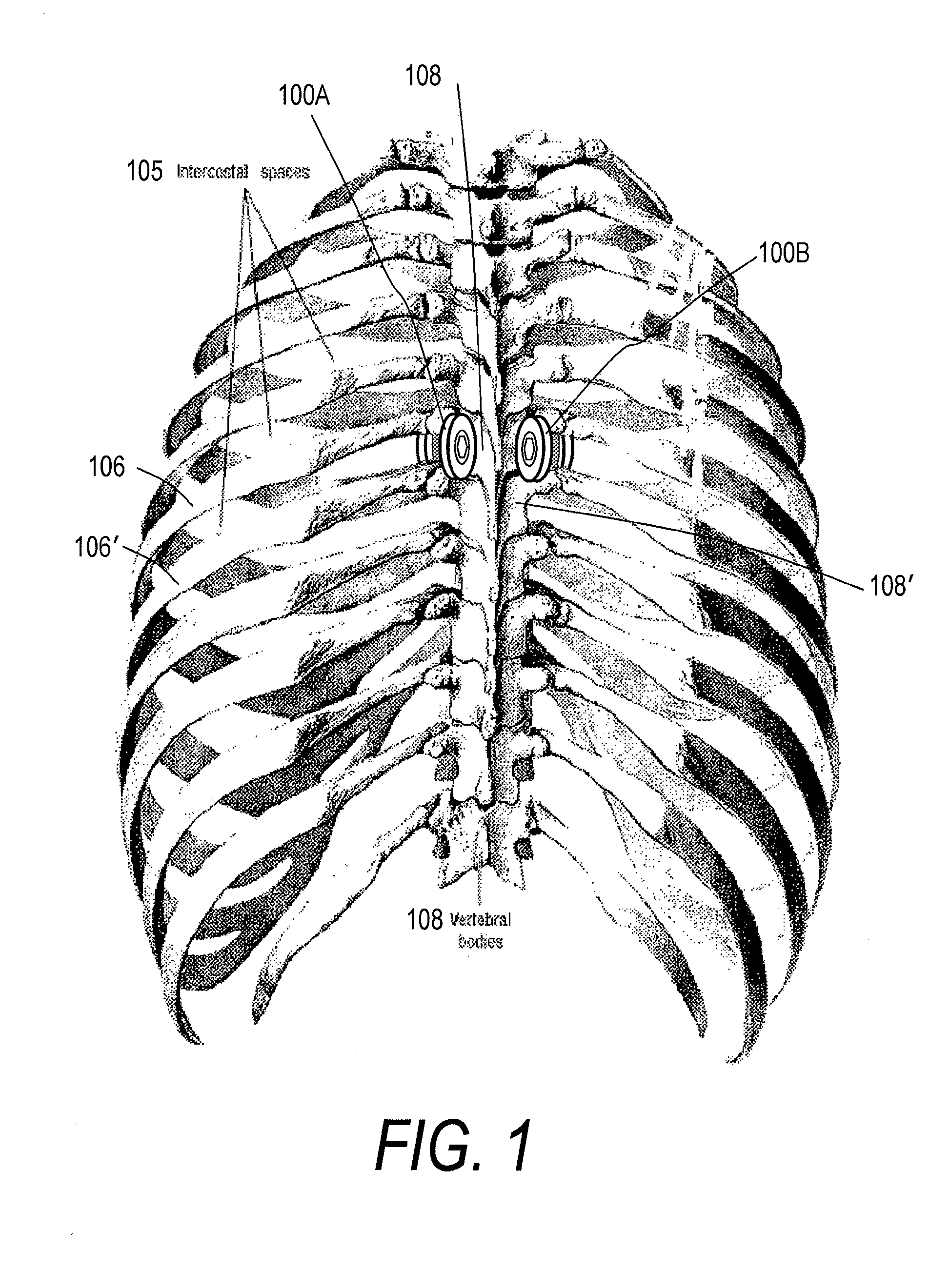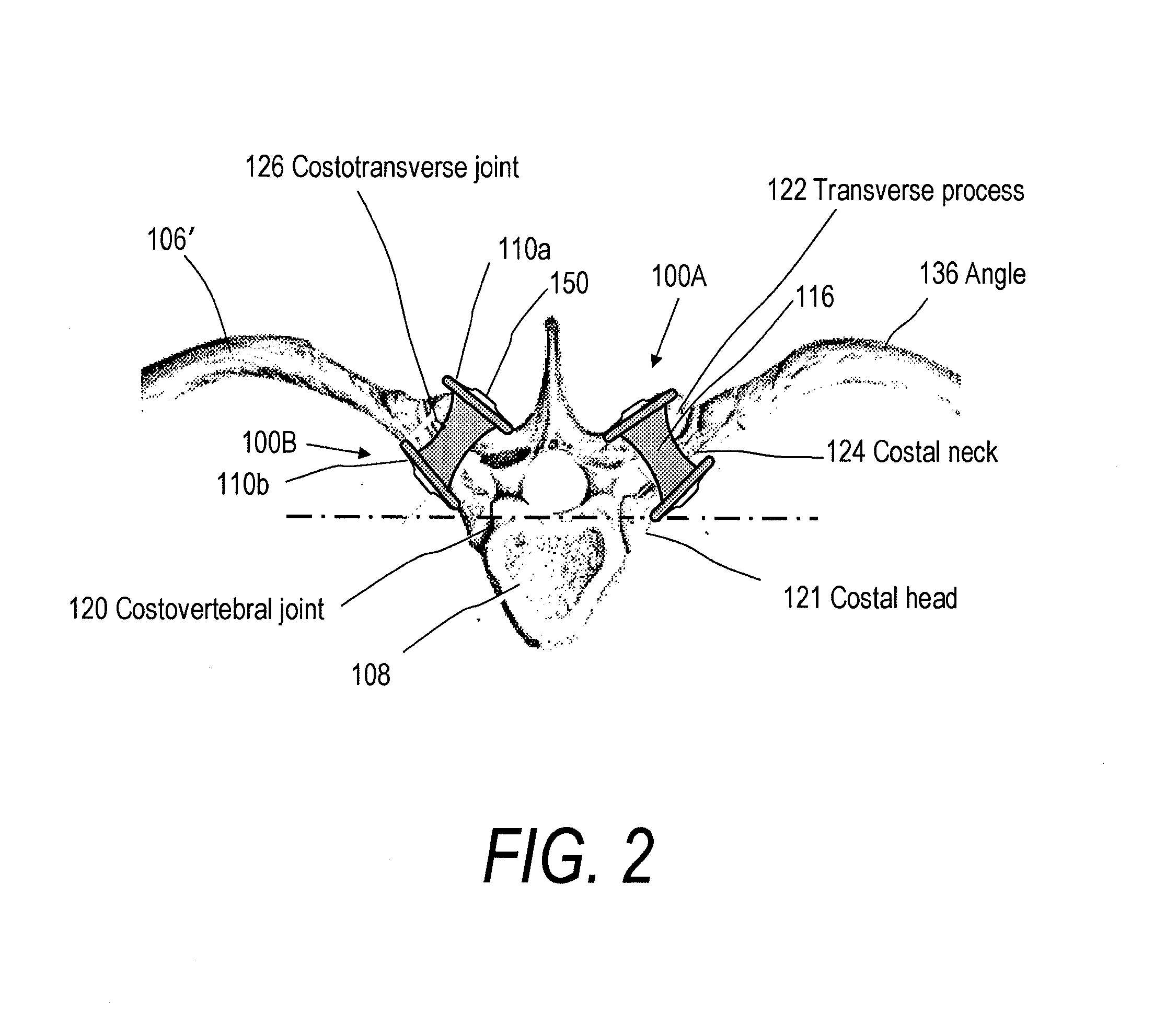Spine treatment devices and methods
a technology for spine disorders and implants, applied in the field of minimally invasive implants, can solve the problems of increased risk, uncertain outcome and efficacy of these treatments, and high invasiveness of fusion procedures,
- Summary
- Abstract
- Description
- Claims
- Application Information
AI Technical Summary
Benefits of technology
Problems solved by technology
Method used
Image
Examples
Embodiment Construction
[0029] Embodiments disclosed herein provide a minimally invasive surgery (MIS) implant system for off-loading a spine segment (e.g., first and second adjacent vertebrae) by placing spacer-like implant devices between vertebrae of the spine segment (e.g., in intercostals spaces 105 between first 108 and second 108′ adjacent vertebrae). Intercostal spaces, as used herein, mean spaces between vertebrae 108, 108′ outward from the costovertebral joints between ribs 106, 106′ and the corresponding vertebrae 108, 108′, and includes spaces between the transverse processes 122, 122′, spaces between costal heads 121, and spaces between costal necks 124, of the spine segment. The system is a non-fusion type of system, to thereby provide dynamic stabilization of a vertebra 108 in a targeted spine segment, while at the same time off-loading forces on the disc and facets. Advantageously, the implant system also can be used for treating scoliosis.
[0030]FIGS. 1 and 2 illustrate one embodiment of a...
PUM
 Login to View More
Login to View More Abstract
Description
Claims
Application Information
 Login to View More
Login to View More - R&D
- Intellectual Property
- Life Sciences
- Materials
- Tech Scout
- Unparalleled Data Quality
- Higher Quality Content
- 60% Fewer Hallucinations
Browse by: Latest US Patents, China's latest patents, Technical Efficacy Thesaurus, Application Domain, Technology Topic, Popular Technical Reports.
© 2025 PatSnap. All rights reserved.Legal|Privacy policy|Modern Slavery Act Transparency Statement|Sitemap|About US| Contact US: help@patsnap.com



